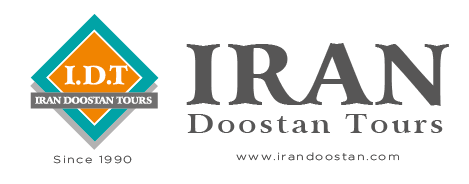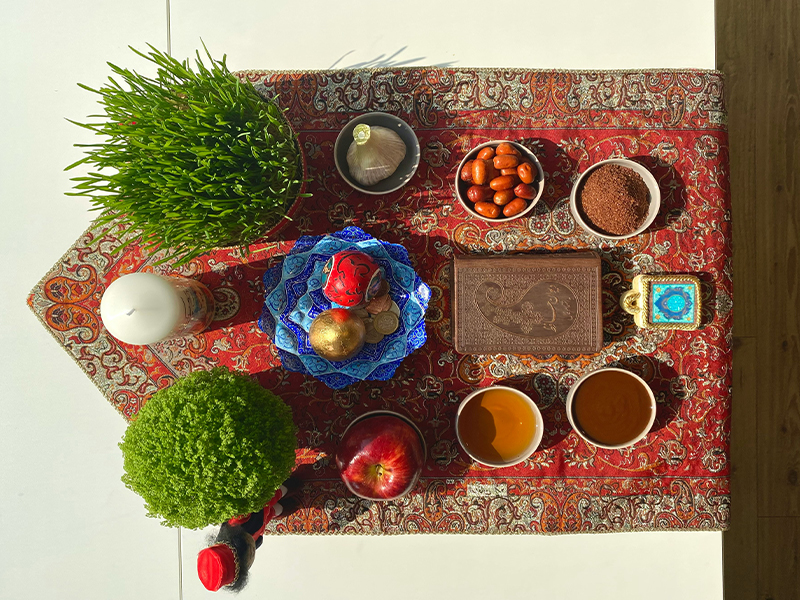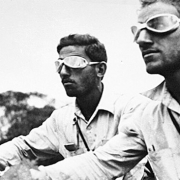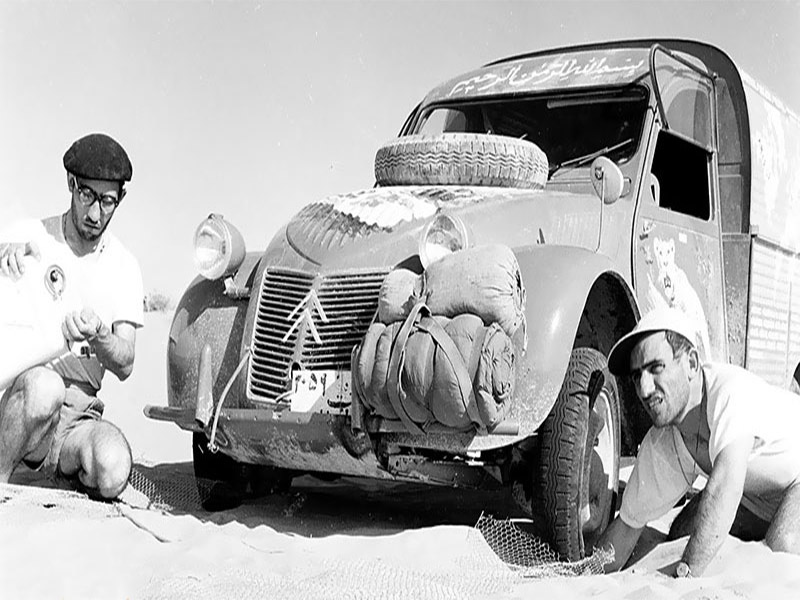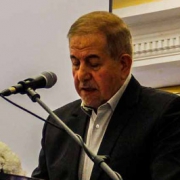Nowruz 2024 (1403); Meaning, History, Date & Time
A Celebration deeply connected to the history and culture of the Iranian people. Persian New Year 2024, known as Eid Nowruz 2024, is a festivity that welcomes spring and invites people to gather around and celebrate the New Year. Nowruz festival in Iran is considered to be the most important event and is universally celebrated among Persian and non-Persian communities all around the world. Nowruz’s importance goes beyond Iran’s borders. In this article, we will answer the question of what is Nowruz and explore the Persian New Year 2024 and its beauties.
Nowruz 2024
Nowruz 2024 is a universal celebration among different countries and marks the beginning of the New Year and spring. This beautiful celebration is known as the Nowruz festival in Iran and is celebrated around March 20 or 21st in the Gregorian calendar. Nowruz is a symbol and a fascinating festival deeply rooted in Iranian culture, making it the most important festivity of Persian people around the globe. Eid Nowruz 2024, or Persian New Year 2024, includes a variety of traditions that are representative of a symbol and meaning.
Most people refer to the Nowruz festival in Iran as a time of rebirth as spring sheds its beauty across the regions of Iran. The combination of Nowruz and spring displays various concepts, such as being happy, enjoying moments, and visiting loved ones. Persian New Year 2024 is not just a celebration but also a time for gathering and cherishing our lives and close relatives with our friends and family. It awakens a sense of being born again, making new attempts in the New Year, and living happily.
Nowruz Meaning
Nowruz, known as the Persian New Year, is the combination of two Persian words, which makes a new concept. The Persian word “Now” means “new” in the Persian language, and the word “ruz” means day. By combining these words a new word is created, which translates to “new day” or “new year” in English. The concept of Nowruz is all about becoming new to yourself and your surroundings, and it also conceptualizes rebirth and being open to new opportunities and chances. It also marks the arrival of spring, and its significance goes beyond traditions and borders.
Another literal and symbolic meaning of Nowruz is the triumph of light over darkness, marking the transition from the cold and dark winter months to the warmer and brighter days of spring and lovely views of flowers and happiness as nature turns green. Nowruz’s meaning can also be translated as “hope,” or optimism and new beginnings, and it celebrates life’s continuous cycle of life of a human being. Eid Nowruz 2024 is the ideal time for people to come together and embrace the positive energy of the New Year and the arrival of spring.
Watch our YouTube video on the IranDoostanTours Channel for an overview of what Nowruz is and how it’s celebrated.
What Is Nowruz?
Nowruz is one of the most ancient traditional festivals that celebrates the Persian New Year and the arrival of spring. Nowruz, or its translation “new day,” represents the arrival of the New Year and spring in the Persian calendar. Including themes such as rebirth and hope, Nowruz is a time of joy and new opportunities.
The transition from winter to spring marked by Nowruz is also a symbol of the rejuvenation of nature and the starting of a new agricultural cycle. Nowruz is a time when people engage in their various customs, and each one has a unique concept, the traditions of the Nowruz are the most prominent traditions of this festival, such as the Haft Sin Table.
Nowruz History
Nowruz, as a term, is an ancient one that implies the unique culture of this day, which goes thousands of years to the past. The earliest reading from the book can be dated back to ancient Persia and before Islam. It is said to be one of the oldest celebrations in the region, which is in harmony with the religious rituals and beliefs of Zoroastrianism. The ancient Persian religion (Zoroastrianism) that dates back to the dawn of human history is the source of this festival.
Some sources also claim that Nowruz might have originated around 3,000 years ago in the territory known today as Persia or Iran. It is believed that King Jamshid, the ruler of the Persian Empire, began Nowruz, along with the solar calendar. Nowruz was at the very core of Zoroastrianism, and the sprawl of the Persian Empire and the Persian tradition led to the folklore diffusion of Nowruz in nearby areas and their people. After a long time, it has evolved into an event that is being observed by various ethnic groups and nations of the world.
Nowruz Festival in Iran
Nowruz is a major cultural celebration in Iran that carries great significance all over the country. Nowruz is regarded as the most important festival in Iranian culture and is observed by people of all ages and backgrounds across the country. In Iran, Nowruz traditions and the hype of the Nowruz normally begin a few weeks before New Year’s Day and last around two weeks. Nowruz includes a variety of traditions, and the hype of the Nowruz Festival in Iran can be felt two weeks before the Persian New Year 2024. People usually go shopping before the Nowruz. They usually buy new clothes and shoes and other things to embrace the concept of Nowruz.
Nowruz is Celebrated by Which Religion?
Nowruz doesn’t belong to any specific religion and is a universal celebration of spring and the Persian New Year. Nowruz has its roots in the ancient Zoroastrianism religion that has transcended religious boundaries and is celebrated by many communities and ethnic groups around the world. This cultural festival is known among Iran, Afghanistan, Tajikistan, Uzbekistan, Turkmenistan, and other nations.
Moreover, in Iran, Nowruz is celebrated by different people with different religious backgrounds, including Shia Muslims, Sunni Muslims, Christians, Jews, and others. Nowruz is the national holiday embraced as the Iranian identity and heritage. So, in general, Nowruz is not associated with any specific religion, thus, it is a universal cultural celebration.
Haft Sin
The Haft Sin table is a traditional tabletop arrangement that is an important part of the Nowruz traditions and the symbol of Nowruz. Haft Sin table is set up in households during the Nowruz period in Iran and other Persian-speaking regions. Interestingly, Haft Sin in Persian translates to “Seven S’s” and it showcases the seven symbolic items that start with the Persian letter “sin” (S). Each one of these items is a symbol and has become an integral part of the traditions of Nowruz. Haft Sin tables are so beautiful, and the decoration of the tables typically varies from one household to another household.
Nevertheless, Haft Sin tables usually include these items: Sabzeh (wheat, lentil, barley sprouts), Senjed (dried fruit of the oleaster tree), Samanu (a sweet pudding), Seer (garlic), Seeb (apple), Serkeh (vinegar), Somaq (sumac berries). Each item at the Haft Sin table is a symbol and representative of a concept. Haft Sin tables also include mirrors, goldfish, the holy Quran, and colored eggs.
Sabzeh: Rebirth and the renewal of nature.
Samanu: Affluence and fertility.
Senjed: Love and romance.
Seer: Medicine and good health.
Seeb: Beauty and health.
Serkeh: Age and patience.
Somaq: It symbolizes the color of sunrise and the victory of light over darkness.
Amu Nowruz or Pesian Santa?
Uncle Nowruz, or Amoo Nowruz, is one of the important characters in folklore and customs linked to the Nowruz festival. He is commonly depicted as a gentleman with a beard adorned in vibrant attire and carrying a cane or staff. Amu Nowruz serves as a companion and messenger of the Persian New Year, heralding joy, happiness, and blessings for the year. In stories and legends, he is portrayed as a kind-hearted figure who ushers in renewal and good fortune.
During the Nowruz period in Iran, children eagerly anticipate the arrival of Amu Nowruz. During his visits to homes, he is believed to bring treats and gifts. Children often recite poems. Sing songs to welcome him eagerly and express their enthusiasm for the approaching New Year. Amu Nowruz is deeply connected with the essence of Nowruz, embodying nature’s revival, the onset of springtime, and hopes for a year to come. His character encapsulates the jubilation and positivity that accompany this event.
Haji Firuz: The Jester of Nowruz
Haji Firuz is a folklore character related to Nowruz. He is known as the “Jester of Nowruz” or “Harbinger of Spring”. Haji Firuz brings happiness and joy to people during the period of Nowruz. Haji Firuz also entertains people with his lively and comedic performances. He aims to cheer up the spirits during Nowruz. Haji Firuz’s appearance includes a blackface mask, a red costume, and a hat with sometimes feathers. Haji Firuz can be seen in the streets as he sings, dances, and plays musical instruments to showcase the spirit of spring and joy.
Watch one of the best Nowruz Celebrations in Matinabad Eco-resort in Iran.
You can catch Haji Firuz in public squares and streets in the weeks before Nowruz. The presence of Haji Nowruz is the symbol of the New Year and is a time for being happy and joyous. In folklore, it is also believed that Haji Firuz brings good luck and blessings, and people usually offer him a gift or money as a gesture of appreciation. Haji Firuz and Amoo Nowruz are the most loved characters of the Persian New Year 2024.
Sizdah Bedar
Sizdah Bedar, sometimes referred to as Nature’s Day or Day Number Thirteen, is a pretty crucial tradition and celebration. It happens on the day numeral thirteen of the Persian New Year. Sizadh Bedar is also observed in Iran and other Persian-speaking places. Being a joyous day, outdoor activities and spending time in nature are what Sizdah Bedar is best known for. Sizdah Bedar Day is thought to offer good luck, keeping away any unlucky vibes associated with the number thirteen; a number that is not favorable in Persian culture.
On Sizdah Bedar Day, family and friends usually gather in parks, gardens, and country places for a picnic to enjoy the outdoors. They also participate in a lot of leisure activities such as game playing, kite flying, singing and dancing, socializing, etc. An interesting custom on Sizdah Bedar has to be the one where blades of grass are tied together, which symbolizes a good harvest and wealth year. These grass bundles, afterward, are tossed into flowing water, like rivers or streams, seen as a method of throwing away any bad vibes or negative stuff from the last year.
For young unmarried people, Sizdah Bedar is considered a particularly auspicious day for finding love and companionship. It is a common belief that going outdoors and spending time in nature on this day increases the chances of meeting a potential partner. The Sizdah Bedar is a joyous conclusion to Nowruz celebrations, marking the end of the two-week festivities, and is a special time for families to gather around and cherish their lives.
Nowruz Traditions
Nowruz traditions are the loveliest part of the Persian New Year. The central traditions of the Nowruz are known as Haft Sin table and Khoone Tekuni. Moreover, another tradition of the Nowruz is Chaharshanbe Suri, which happens on the last Wednesday before Nowruz. People usually light a bonfire and jump over it to keep away bad luck and attract good fortune. New Year’s Day feast is also a tradition that happens in Nowruz. Families gather around and enjoy a “Sabzi Polo Ba Mahi (herbed rice with fish).
During Nowruz, families also give Eidi (gifts or money) to other people as a symbol of blessing. Some families also read the Holy Quran and Hafez’s poems to exchange spiritual experiences in their houses and enjoy the rich heritage of their country and religion. Nowruz is also the best time for doing outdoor activities, especially during the 13th day of the Nowruz. On this day, families go outdoors and engage in cheerful activities. They also throw away their grass bundles into rivers and running waters to cast away bad luck. It is believed that this act can help find a good partner if you are single.
Things to Do during Nowruz
There are a lot of things you can do during Nowruz. First of all, you should do a “Khoone Tekooni,” which means that you should clean your house, organize it, and freshen up your house to symbolize a new start for the approaching year. You can then set up a Haft Sin table with items; you can even personalize the table and extra valuable things for yourself.
Most Iranian people buy a goldfish and put colored eggs and a mirror on the Haft Sin table. Moreover, Nowruz is the best time to visit your family and friends. Go to a friend’s house, spend some quality time with them, read poems, and listen to music. You can also make traditional Iranian food to boost your experience of Nowruz. The herbed rice with fish is the most popular one during this time.
Give Eidi to your friends and loved ones and exchange gifts with family and children. In addition, there are a lot of cities that host Nowruz festivals, which creates the opportunity to engage and attend them, especially if you are not familiar with the Nowruz traditions. Enjoying nature and going outdoors is also highly recommended, as nature gets very beautiful all around the region during the springtime. You can read poetries and the holy Quran if you want to have a spiritual experience. Finally, set up new goals for the New Year and take the time to look at your past year and cherish your moments. Let’s hope Nowruz 1403 will be one of the best years for all of us.
Eid Nowruz 2024 Facts
Nowruz is a wonderfully colorful festival and a culturally huge celebration. Rich with symbolism and traditions, Nowruz invokes a sense of renewal. These facts offer a snapshot into the captivating history and the mystic customs surrounding this truly old festival.
An Ancient Festival: Nowruz is a festival with roots stretching back over 3,000 years. The roots of this beautiful holiday are claimed to be founded in Ancient Persian and Zoroastrianism religions.
Beautiful and Universal: Nowruz gets hoorayed by diverse communities and cultures across the whole wide world, inclusive of Iran, Afghanistan, Azerbaijan, Tajikistan, Uzbekistan, areas in India, Pakistan, and Iraq. It is a public holiday in many of these countries and is celebrated by various people.
UNESCO Heritage: Nowruz was officially recognized as an Intangible Cultural Heritage of Humanity in 2009 by UNESCO.
Spring Equinox: Nowruz rolls around on the spring equinox, typically on March 20th – 21st. Interestingly, it symbolizes the start of spring in astronomical science when the days are longer in the daytime and nights are shorter.
Thirteen-Day Celebration: Nowruz is a 13-day celebration, starting from the first day of the Persian calendar month of Farvardin and concluding with Sizdah Bedar, the thirteenth day.
Renewal: Strangely enough, Nowruz ties in deeply with the celebration of life’s renewal and the arrival of spring. It’s a time meant for appreciating the resurgence of life and fertility and embracing the beautiful nature around us.
Haft Sin Table: The Haft Sin table, decorated with seven symbolic items, is a key feature of Nowruz. The specific items and decorations on the table vary, sometimes based on regional and personal likings.
Sprouting Sabzeh: Growing Sabzeh, like wheat, lentil, or barley sprouts on the Haft Sin table is common. It symbolizes rebirth and hope. It represents the anticipation for a prosperous year ahead.
Chaharshanbe Suri: Chaharshanbe Suru is the festival of fire, which is another tradition of Nowruz about being happy and fearless. On the eve of the last Wednesday before Nowruz, People light bonfires and jump over them to keep away negativity and be fearless.
Sizdah Bedar: Sizdah Bedar in Nowruz 2024 is the day when people spend their time outdoors and enjoy nature. They play games and get close with their families to be unified and bring good luck for themselves in the upcoming months of the New Year.
Nowruz 2024 Date & Time
Being one of the most important holidays, Nowruz 2024 begins on Wednesday morning this year on March 20 and concludes on Thursday, March 21. Nowruz (also known as the “March Equinox”) occurs on the first day of spring every year and is celebrated worldwide by Persian and non-Persian communities.
For most Iranian people, the Nowruz 2024 date and time is an important moment, and they gather with their families and friends to give their prayers to god, read the holy Quran, and wish a greater and better new year for themselves and their loved ones.
Wed, Mar 20, 2024, 4:06 AM
Central European Time
In What Countries Nowruz Is Celebrated?
Nowruz is celebrated in various countries in Central Asia and has influenced a lot of cultures and countries in the region, making it one of the most significant holidays in the whole world. When it comes to celebrating Nowruz, since Nowruz originated from Zoroastrianism, Iran is at the top of the list. Afghanistan and Tajikistan are also places where Nowruz is celebrated. Traditional dances and the preparation of special meals are the characteristics of this holiday in these countries.
In Azerbaijan, Nowruz is known as “Novruz Bayramı,” and the people of Azerbaijan also celebrate this day. Uzbekistan, Turkmenistan, Kazakhstan, Kyrgyzstan, Iraq, and Pakistan are also other neighbors of Iran that Nowruz has influenced their culture and is celebrated every year. An interesting fact about Nowruz is that it is also observed by certain communities in India. So, Nowruz is well-known in parts of Central Asia, the Caucasus, and the Middle East.
Final Words
The beginning of the New Year in the Persian calendar, known as the Nowruz festival in Iran, is the most important event for Iranian people. Nowruz is deeply rooted in Zoroastrianism and is celebrated around March 21st, marking the beginning of spring and bringing friends and families together for gift-giving, feasting, and traditions like cleaning one’s house and setting up a “Haft Sim table”.
The Persian New Year 2024 is a 13-day celebration, and its beauties and cultural characteristics go beyond borders. If you want to visit Iran, don’t forget to check out this lovely experience (Nowruz 2024) and watch its beauty from a closer perspective.
Are you planning to travel to Iran? Check out our Iran tours.
